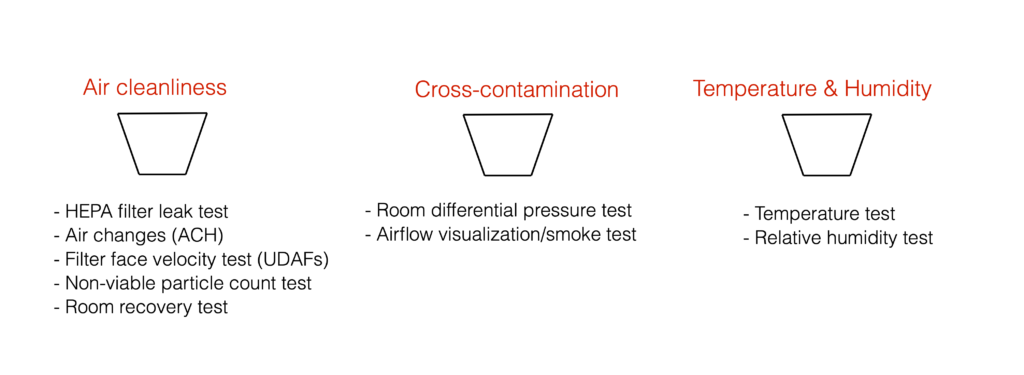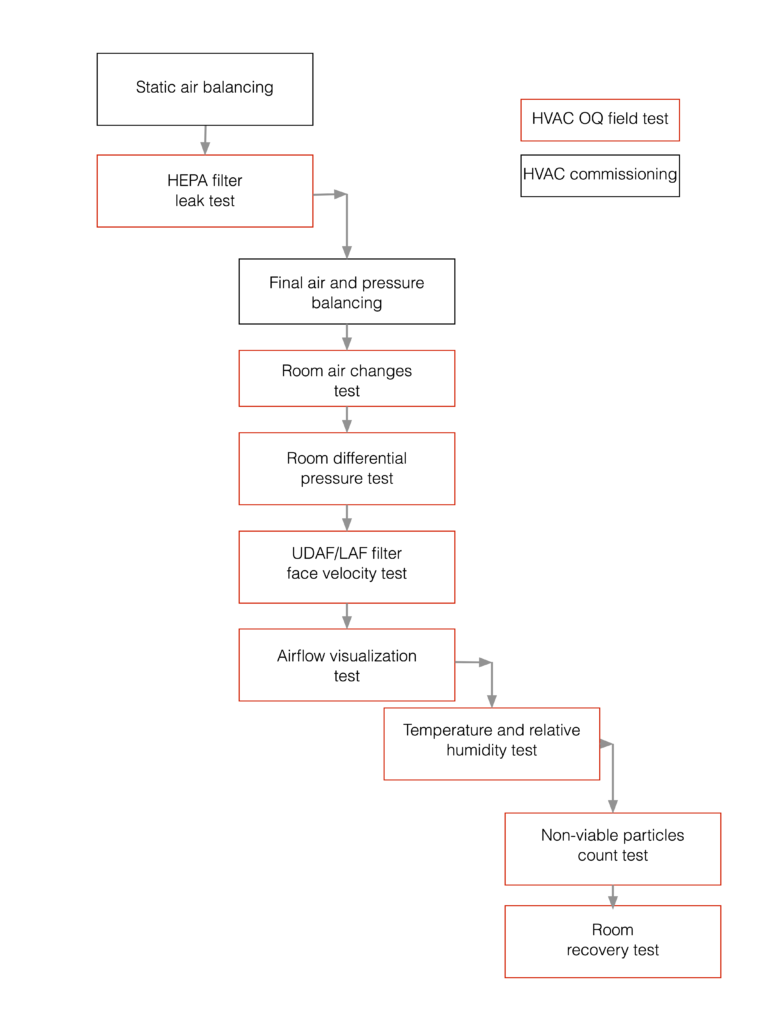What to test for HVAC Operational Qualification (OQ)?
Among the many milestones in a project, HVAC Operational Qualification (OQ) is often taken for granted until things get messed up. HVAC OQ is closely entwined with HVAC commissioning and involves a series of tests that need to follow a certain sequence.
Hopefully, after going through this post, you’ll get an overview of the key HVAC OQ tests and their relevance and sequence.
Typical HVAC OQ tests
Instead of straightaway diving into the long lists of HVAC OQ tests, let’s step back and ask: What’s the purpose of an HVAC system for a pharmaceutical or biotech facility? You’ll realize that HVAC’s role is to:
- ensure a certain level of air cleanliness (class A, B, C, D);
- prevent cross-contamination; and
- provide the right temperature and humidity for products, processes and people.
Once we get that idea, all HVAC OQ tests can be grouped into three baskets:

Different facilities would have their own specific requirements, but typically the following HVAC tests are required for OQ testing:
Air cleanliness
- HEPA filter leak test: To ensure HEPA filters are not leaking, which would otherwise compromise the cleanliness of the space (typical: maximum penetration should be less than 0.01% of the upstream concentration).
- Room air changes: To ensure room classification (e.g., 25 or 30 ACH for Grade C rooms).
- Unidirectional Airflow (UDAF) filter face velocity: To ensure a uniform downward flow of HEPA-filtered air at a certain optimum velocity over the working area of a critical operation (typical: 0.45 ±20% m/s at 150 mm from filter face).
- Room non-viable particle count test: To check if non-viable particles of ≥0.5 microns and ≥0.5 microns meet the requirements of room classification requirements. For example, for a Grade C room, the limits are 352,000 particles/m3 (≥0.5 microns) and 2,900 particles/m3 (≥5 microns).
- Room recovery: To test how fast a room can recover to its original classified state if something happens that messes it up. For example, if there is a spill or the HVAC system stops abruptly. Typically, the maximum allowable recovery time is 20 minutes.
Cross-contamination
- Room differential pressure (B to C, C to D and D to CNC): To minimize the risk of cross-contamination from less clean areas to cleaner areas (typical: 10-15 Pa pressure differential between rooms of different grades).
- Airflow visualization/smoke testing: To show (with video recording) that smoke flows from a room with higher pressure to a room with lower pressure. (This test is not a mainstream test; some clients insist on it, but some don’t.)
Temperature and humidity
- Room temperature: To check if room temperature meets the product, process and comfort needs. The typical range can be 21 +/-1 C.
- Room humidity: To ensure humidity is within limits. Typically, higher than 60% is not acceptable.
Remember, all these tests are done in an at-rest facility. Let’s see the sequence next.
Sequence of HVAC OQ tests
The flowchart below shows the typical sequence.

As you can see, the very first test is the HEPA filter leak test, which requires static air balancing to be completed first. Why? Because you want to test HEPA filters at design supply air flows and not at some arbitrary flows that are either too high or low.
The other OQ field tests happen only after the final air and pressure balancing, a critical milestone. Important to emphasize: HVAC OQ testing should not start unless the final air and pressure balancing is fully completed and approved.
Non-viable particle count test is usually done towards the end of the testing process when all other tests are okay, and human movement can be controlled. Unless this test is okay, there is no point in testing room recovery. That’s why the room recovery test falls at the end. Leaving you with…
Point to ponder: What’s the logic behind doing the HEPA leak test before the final air and pressure balancing?
